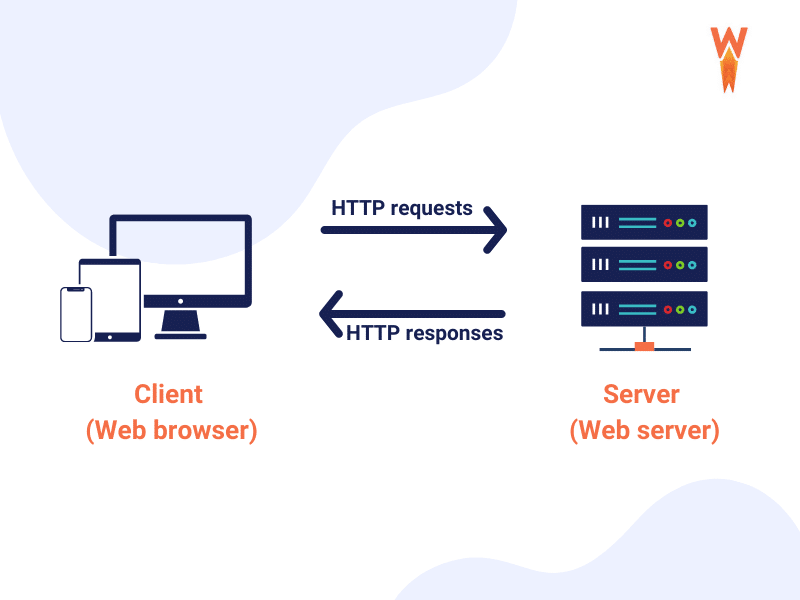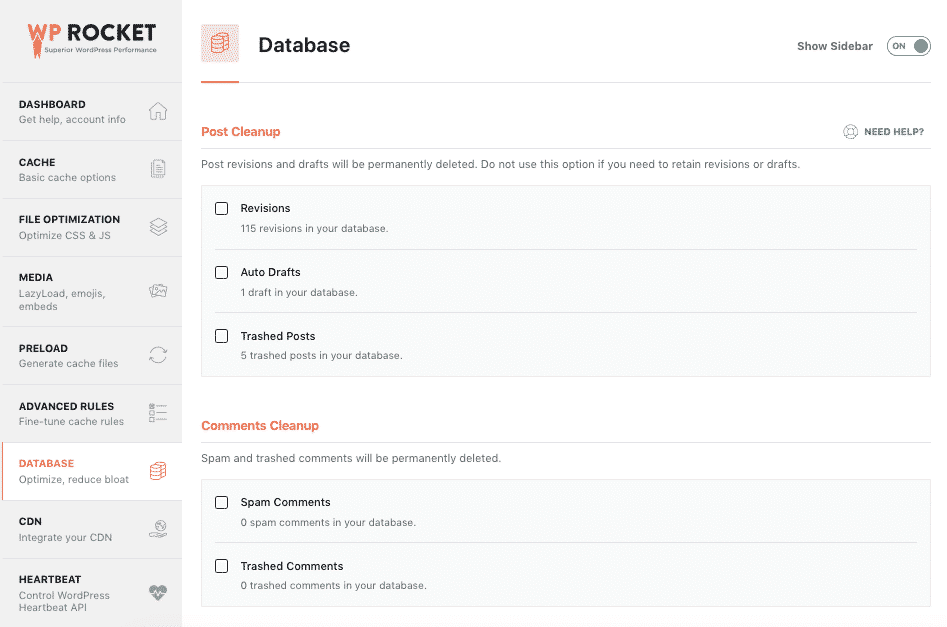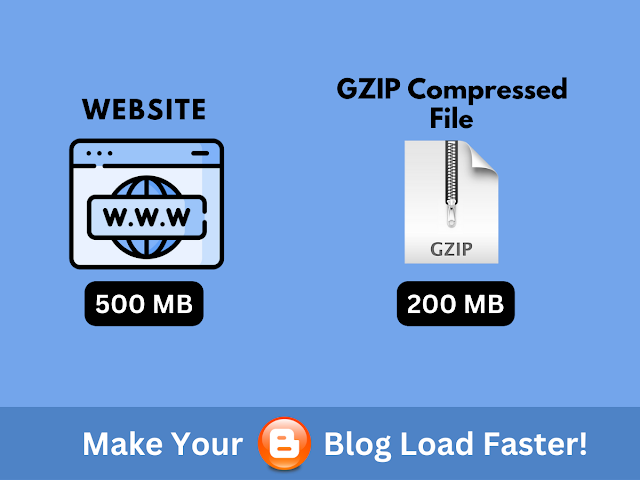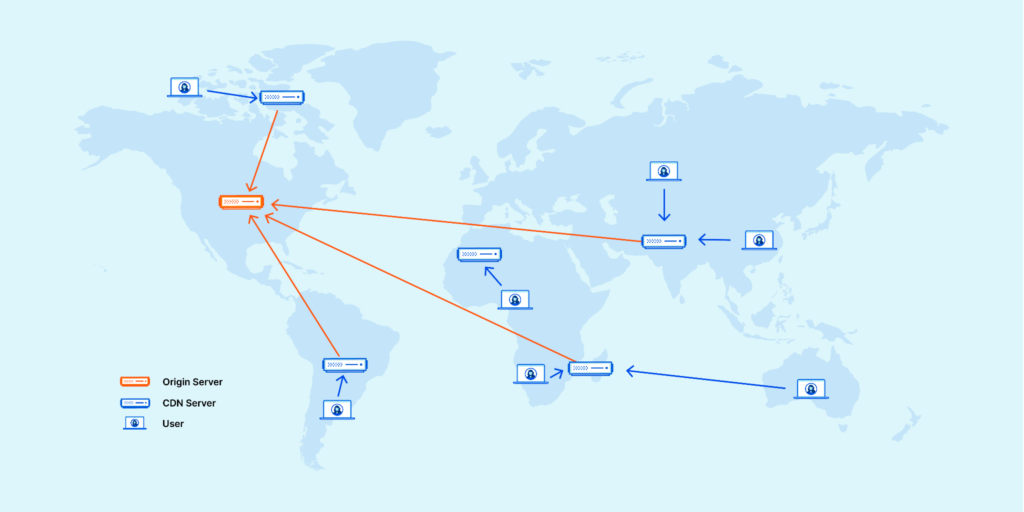When it comes to making our WordPress websites fast, we often focus on how they look and what content we put on them. However, there’s an important technical aspect that can impact speed, and that’s the performance of the server that hosts our websites.
In this blog, I’ll discuss about the server response time and its influence on your WordPress site’s speed. I’ll also provide practical tips to help you ensure that your server responds quickly, resulting in a faster loading website for your visitors.
Websites that are faster improve user satisfaction and can contribute to better overall performance. Thus, let’s learn the tips and tricks to reduce your server response time on WordPress.
1. Minimize External HTTP Requests

Step 1: Audit Third-Party Resources
Begin by carefully checking all the third-party resources your website uses. Decide if each one is really necessary. Remove anything that’s not essential to reduce how often your website asks other servers for things, which will speed up your site.
Step 2: Combine and Minify Files
Instead of having lots of small files from other places, try putting them together into one big file. This way, your website makes fewer requests and it loads faster.
Step 3: Implement Asynchronous Loading
To speed up your website, you can use asynchronous loading for things that aren’t super important. This means these less important things will load separately while the important stuff keeps loading. This way, your website won’t get slowed down by waiting for everything to load at once, and it will show up faster for your visitors.
Step 4: Utilize Browser Caching
Make your website faster by using something called “browser caching” for things from other places on the internet. What this does is tell the visitors’ web browsers to remember these things for a while.
So, when the same visitor comes back to your website, their browser already has some of the stuff saved, which means your website loads faster for them because it doesn’t have to ask for those things again from the internet. This makes your website respond quickly and load faster overall.
Step 5: Explore Content Delivery Networks (CDNs)
CDNs are like having copies of your website’s files in different places worldwide. When someone visits, they get the files from the nearest location. This makes your site load faster for people all over the world.
By following these steps, you’re not just making your website look good; you’re also making it load faster and perform better.
2. Optimize Database Queries

The optimization of your WordPress database can significantly reduce the server response time (SRT) of your WordPress site. You could give your website a performance boost by turbocharging its brain.
Let’s find out how to make a website faster and more responsive by optimizing database queries.
- Indexing Mastery: Learn how to organize data effectively. When your data is well-organized, your website can find and show information faster. This helps your website respond quickly and makes it work better.
- Query Optimization Techniques: Make your search instructions in the database clear, focused, and good at finding the right information without making the server work too hard. This will help your website respond faster and be more efficient.
- Regular Database Maintenance: Always make sure that your database is as well maintained as any other machine. Maintain a regular schedule of checking and cleaning up your database so that you can identify and eliminate any redundant data or old data. This will help your database to function smoothly and respond quickly and will prevent it from getting bloated with unnecessary data.
- Avoiding SELECT: Be careful when picking what data you want from the database. Don’t choose “select all” because it can get you more information than you need. Instead, be specific and only choose what you really want. This way, you make the server’s job easier, and your website responds faster.
- Caching Smartly: Your WordPress website will perform better by caching frequently requested data, as you will be less likely to have to repeat queries, which will result in faster response times and greater overall efficiency.
The tactics you use here don’t just optimize queries, but they also ensure better response times.
3. Reduce Server-Side Redirects
Server-side redirects are a good way to speed up and improve responsiveness. You can significantly impact your Server Response Time (SRT) by optimizing these redirects.
- Audit Redirect Chains: Check your website’s redirect chains thoroughly to start the optimization process. Remove unnecessary redirects and loops, thereby reducing the time it takes for the server to respond and reducing overall performance.
- Implement Direct Links: Avoid intermediary redirects by using direct links whenever possible. By linking directly to your content, you avoid unnecessary detours, ensuring users get to their destination quickly without having to wait on the server.
- Evaluate URL Structure: Look at your URL structure in terms of its user and search engine friendliness. Through optimization of URL paths, complicated redirects are reduced, server response times are improved, and overall Server Response Time is enhanced (SRT).
- Utilize 301 Redirects Wisely: When it comes to SEO (making your website more visible on search engines), be careful when using something called “301 Redirects.” Using them too much can make the server do extra work. Make sure each redirect has a good reason and helps users without making the website slower to respond.
- Periodic Redirect Audits: Make it a habit to regularly check your website’s redirects. As your website changes and grows, you might need to update these redirects to match the new content and structure. This helps make sure your redirects still make sense and doesn’t slow down your website’s response time.
4. Enable GZIP Compression

Using GZIP compression is one of the most effective ways to improve WordPress server response time. Data transfers become faster and more efficient when your server digitally compresses the baggage it sends to users.
- Efficient Data Compression: When someone visits a website, their browser needs to download files like images and text to show the page. GZIP compression takes these files and makes them smaller without losing any important information. So, when these compressed files travel from the server to the browser, they arrive faster because they’re smaller. This helps your website load speedily, which is great for users!
- Reduced Bandwidth Usage: GZIP works by making files smaller, which means it uses less internet “space” when sending them from the server to people’s computers. This helps people with slow internet connections because the files arrive faster. Plus, it’s easier on the server, which also makes your website respond faster overall.
- Easy Implementation: Turning on GZIP compression is easy. Most web servers and content management systems like WordPress can do it without any trouble. You can use server settings or plugins, and it won’t be a complicated process. When you do this, your website will load much faster without you having to deal with difficult setup steps.
- Compatibility with Various File Types: GZIP compression doesn’t only work for certain types of files – it works for many different kinds, like HTML, CSS, JavaScript, and more. This means it can speed up your whole website, making everything work together smoothly and efficiently.
- Browser and Server Harmony: GZIP compression makes web browsers and servers work well together. Browsers can easily open compressed files, so your website loads quickly, and users have a great experience.
5. Implement Server-Side Caching
Here’s a simple way to make your website faster and more responsive: Use something called “server-side caching.” It’s like creating a shortcut for things that people look at often. This helps the server work less, making your website faster and giving users a better experience.
- Page Caching Efficiency: You can use page caching to save already-made web pages. This smart strategy speeds up how quickly content is shown and makes the server do less work. By showing these saved pages, your website loads faster, which greatly improves its response time.
- Object Caching Strategies: Implement object caching, which is like storing information that people often look at or use from the database. Instead of asking the database for this information every time, you just get it from the storage. This means fewer database questions, and that helps the server work faster and better, which leads to a faster website response.
- Browser Caching Implementation: You can also make your website better for users by using browser caching directives. Browser caching directives are ways to keep data on a user’s device, such as a computer or phone, so that they won’t need to ask the server for it every time they open the website. This makes your website load faster and works better.
- Dynamic Content Handling: When managing a website, it’s essential to make sure it loads quickly for users. One way to do this is by using caching, which means storing certain parts of the website in a “ready to go” state so they can be shown quickly. However, some parts of a website change often, and you don’t want users to see outdated information. So, you need to find a balance between using cached content (the saved stuff) and making sure dynamic elements (the changing parts) are up to date. This way, the website runs efficiently, and users get a fast and responsive experience.
- Regular Cache Audits: When you optimize your WordPress website, you use caching to make it load faster. Caching stores certain parts of your site so they can be shown quickly to users. However, over time, some of this stored data can become outdated or unnecessary. So, it’s important to regularly check and clean out this cached information. This ensures that caching continues to work well and keeps your WordPress site running smoothly and responding quickly to user requests.
6. Optimize WordPress Theme
Adjusting your website’s theme is important for making it work smoothly and efficiently. A well-optimized theme doesn’t just make your site look good; it also makes it respond faster.
- Create a Child Theme: When you have a website, you often use a theme to make it look a certain way. But sometimes, the theme itself gets updates from the people who made it. If you’ve made changes to how your website looks, these updates can mess things up. So, you create something called a “Child Theme.” It’s like a protective layer that keeps your changes safe, so they don’t get lost or cause problems when the main theme gets updated.
- Streamline Code and Scripts: Look at the code of your theme and make it simpler by getting rid of extra or repeating parts. Use less complicated code and tools from outside sources. This makes your theme’s code shorter and helps your website load faster.
- Prioritize Mobile Responsiveness: Make sure your website looks good and loads quickly on mobile phones. This is important for a better experience for people using small screens on their phones. Thus, when you create your website’s design, focus on making it work well on mobile phones first. It should not only look good but also load quickly on phones. This way, people using their phones to access your website will have a better experience.
- Optimize Images and Media: Make your pictures and media files smaller and better in your website’s design. Big and unimproved media files can make your website load slowly. Use tricks like “lazy loading” and “responsive image optimization” to make your website load faster without making the pictures look bad.
- Limit Theme Features to Essentials: When you choose a design for your website, it might have lots of fancy features. However, having too many of them can make your website slow. So, you should only keep the ones that are really important for your site to work well. This makes your website lighter and helps it load faster.
7. Use a Content Delivery Network (CDN)

Improve your website’s speed and make it accessible to people around the world by using a Content Delivery Network (CDN). You can achieve great performance, especially with excellent WordPress CDN services.
- Global Content Distribution: A CDN spreads your website’s content to servers all around the world. This makes sure that when someone opens your site, they get the information from a nearby server, making the website load faster and giving users a better experience.
- Faster Page Load Times: CDN servers spread around the world mean that web pages load faster. People from different places will see your site load quickly, which makes them happy and can also help your site show up higher in search results.
- Bandwidth Offloading: CDNs help your main server by storing and delivering static parts of your website. This takes some of the work off your main server, making your website faster and more reliable.
- Security Enhancement: A lot of CDN providers have strong security features like protecting your site from cyberattacks. This extra security keeps your website safe from potential threats and makes it more secure overall.
- Easy Integration and Configuration: The top WordPress CDN services make it easy for you to set up and use. Even if you’re not a technical expert, you can quickly integrate and configure your CDN to improve your website’s performance. For instance, Perfmatters helps optimize Content Delivery Networks (CDNs) by providing fine-tuned control over how your website’s assets are loaded. You can efficiently manage CDN integration, including excluding specific files from being served through the CDN, ensuring better control over your website’s performance.
Conclusion
In conclusion, these are the 7 most effective methods you can use to significantly reduce your server response time. A faster server response time leads to a better user experience, lower bounce rate, increased conversions, and improved SEO performance.
If you have additional methods for speeding up server response time that I haven’t mentioned in this guide, please share them with me in the comments below. I’d be happy to learn from your insights and expertise.